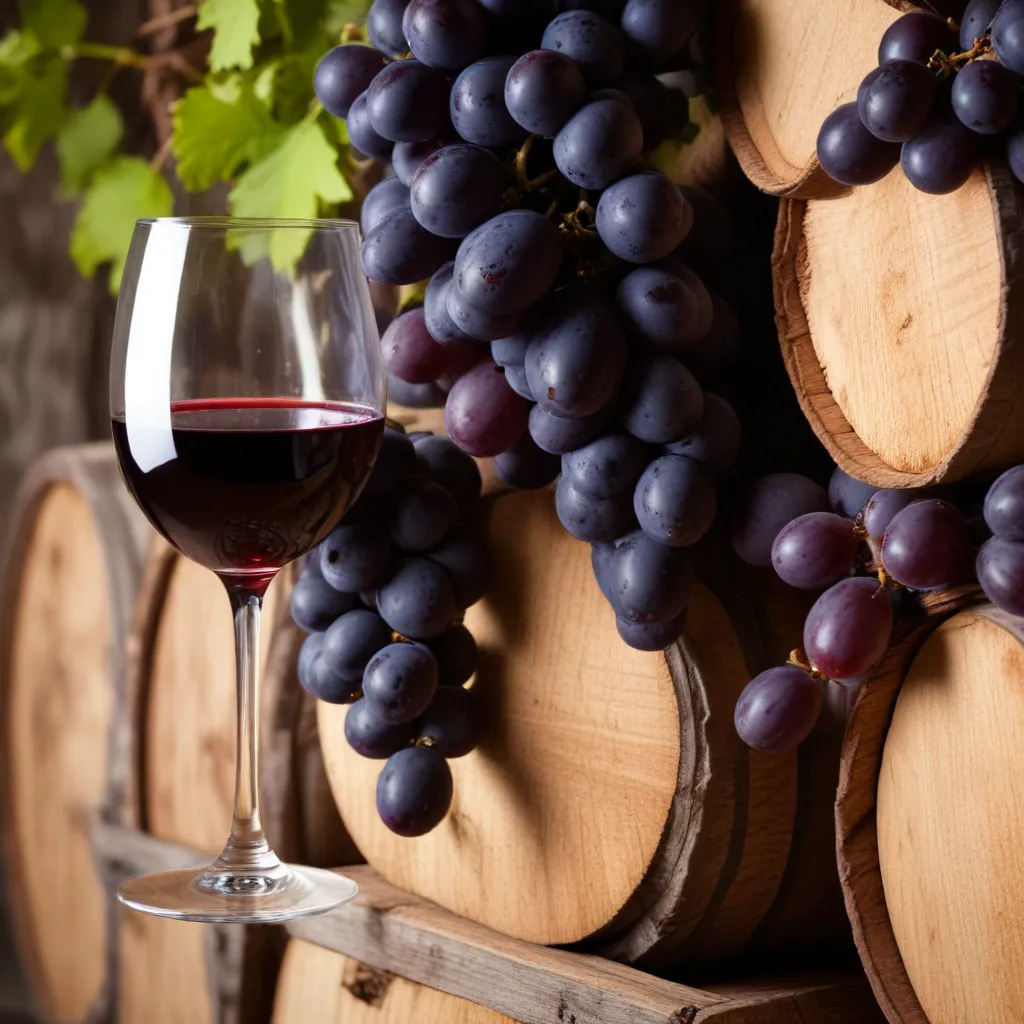
Grape to Glass: Unlocking the Mysteries of Vintage Variation in Wine Antioxidants
Behind every glass of wine lies a complex tapestry of flavors, aromas, and health-promoting compounds – all intrinsically tied to the vintage year. One of the most fascinating aspects of wine’s chemistry is the dynamic interplay of antioxidants, which can vary significantly from year to year. As a hospitality and wine expert writing for the Wine Garden Inn, I’m excited to delve into the science behind this phenomenon and explore how vintners can harness the power of antioxidants to craft exceptional, terroir-driven wines.
The Science of Antioxidants in Wine
At the heart of wine’s antioxidant profile are a diverse array of polyphenolic compounds, including flavonoids, phenolic acids, and the renowned resveratrol. These molecules are synthesized within the grape berries, acting as natural defenses against environmental stressors like UV radiation, pests, and disease. The antioxidant profiles of grapes can vary tremendously based on factors such as grape variety, soil acidity, sun exposure, and viticultural practices.
Climatic conditions during the growing season play a crucial role in determining the ultimate antioxidant composition of the wine. Warm, sunny days coupled with cool nights foster the optimal balance of sugars, acids, and phenolic compounds, while extreme heat or drought can disrupt this delicate equilibrium. The fermentation and aging processes also have a profound impact, as winemakers’ choices regarding yeast strains, oak aging, and blending can further shape the antioxidant fingerprint.
Vintage Effects on Wine Antioxidants
Vintage variation in wine antioxidants is a fascinating phenomenon that can be attributed to the dynamic interplay of numerous environmental and enological factors. Each growing season brings a unique set of challenges, from late spring frosts to unexpected heatwaves, that can profoundly impact the antioxidant synthesis within the grape berries.
For example, a cool, wet vintage may result in higher levels of certain flavonoids, such as quercetin and catechin, which contribute to the wine’s mouthfeel and oxidative stability. Conversely, a warm, dry year can boost the production of resveratrol, the celebrated compound known for its potential cardiovascular benefits. These vintage-to-vintage variations in antioxidant content not only influence the wine’s sensory profile but also its longevity and health-promoting properties.
Analytical Techniques for Antioxidant Quantification
Unraveling the mysteries of wine antioxidants requires sophisticated analytical tools. High-Performance Liquid Chromatography (HPLC) and mass spectrometry (MS) are two powerful techniques that enable researchers to identify and quantify the diverse array of polyphenolic compounds present in wine. These methods provide precise, detailed profiles of a wine’s antioxidant composition, offering valuable insights into the impact of vintage, terroir, and winemaking practices.
Complementing these advanced analytical approaches are spectrophotometric assays, which measure the overall antioxidant capacity of a wine sample. These simpler, more accessible tests can be used by winemakers and consumers alike to gain a general understanding of a wine’s health-promoting potential.
Sensory Implications of Antioxidant Variation
The impact of antioxidants on a wine’s sensory experience goes far beyond their potential health benefits. These compounds play a crucial role in shaping the wine’s aroma, flavor, and mouthfeel. For instance, higher levels of certain flavonoids can contribute to a wine’s astringency and bitterness, while resveratrol and its derivatives can impart subtle notes of spice and dried fruit.
Vintage variation in antioxidant profiles can also influence a wine’s oxidative stability, affecting its ability to age gracefully. Wines with a robust antioxidant arsenal tend to be more resilient, maintaining their freshness and complexity over time. Conversely, vintages with lower antioxidant levels may be more susceptible to premature aging, leading to the dreaded “oxidized” character.
Terroir and Antioxidant Expression
The concept of terroir – the unique blend of geographical, climatic, and viticultural factors that shape a wine’s character – is intrinsically linked to the expression of antioxidants. The grape growing region, soil composition, and even elevation can all influence the synthesis and accumulation of these health-promoting compounds.
Winemakers who embrace sustainable, organic, or biodynamic farming practices often witness a heightened antioxidant profile in their wines. These holistic approaches to viticulture foster a thriving, biodiverse ecosystem that supports the grapes’ natural defense mechanisms, resulting in a richer, more complex antioxidant array.
Beyond the vineyard, the winemaker’s choices in the cellar can also have a profound impact. The selection of yeast strains, the decision to employ oak aging, and the art of blending all contribute to the final antioxidant composition of the wine.
Health Benefits of Wine Antioxidants
The potential health benefits of wine antioxidants have long been a subject of fascination, capturing the public’s imagination with the concept of the “French Paradox.” While moderate wine consumption has been associated with reduced risk of cardiovascular disease, the underlying mechanisms are complex and multifaceted.
Resveratrol, the renowned polyphenol found in grape skins, has garnered significant attention for its potential cardioprotective effects, as well as its possible role in longevity and anti-aging. Flavonoids, on the other hand, have been linked to a wide range of health benefits, from improved cognitive function to reduced inflammation.
However, the bioavailability and absorption of these antioxidants can vary greatly, depending on individual differences and lifestyle factors. The key, as always, is to enjoy wine in moderation as part of a balanced, healthy lifestyle.
As we’ve discovered, the world of wine antioxidants is a rich and dynamic tapestry, with each vintage offering a unique and captivating story. By understanding the science behind this phenomenon and embracing the nuances of terroir, winemakers can craft exceptional, health-conscious wines that truly capture the essence of the grape. Here at the Wine Garden Inn, we’re proud to showcase these masterpieces, inviting our guests to embark on a sensory journey from grape to glass.
